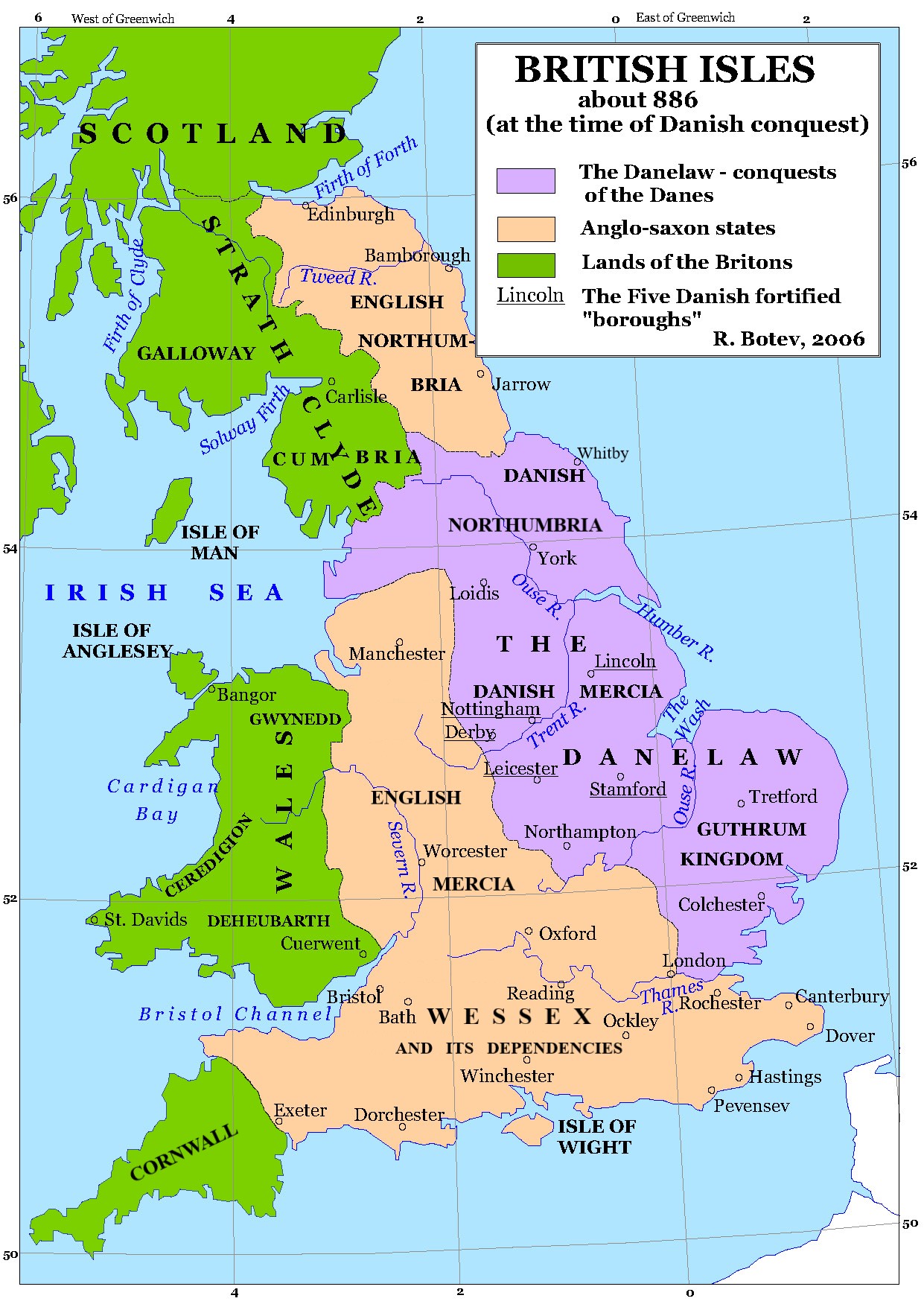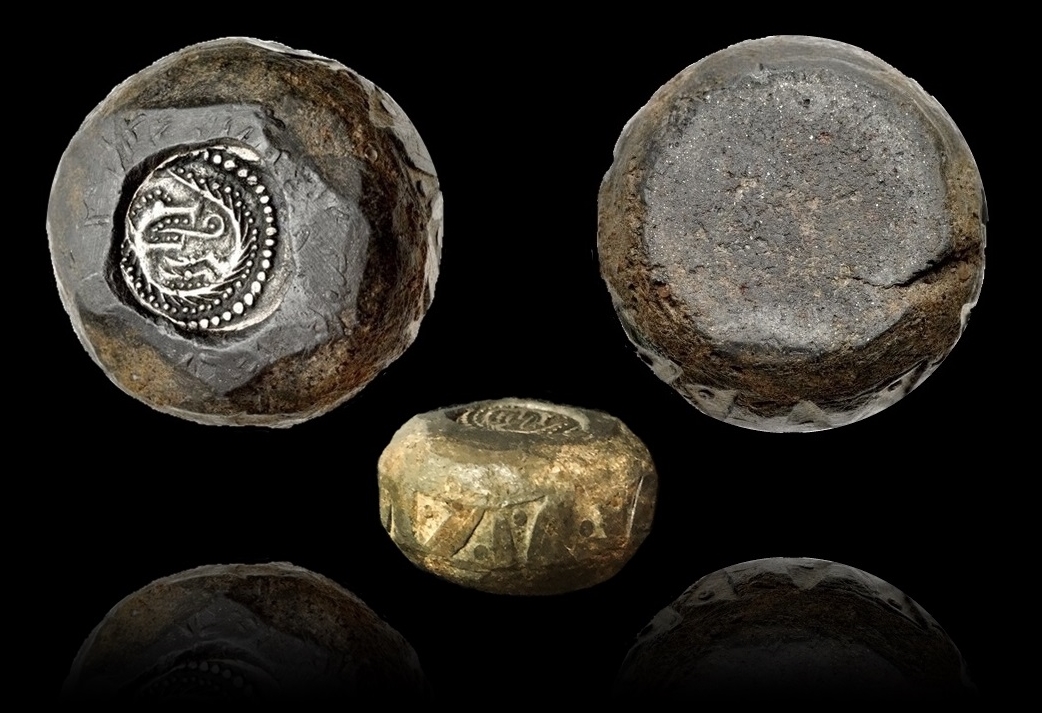|
886
__NOTOC__ Year 886 (Roman numerals, DCCCLXXXVI) was a common year starting on Saturday of the Julian calendar. Events By place Byzantine Empire * March – A wide-ranging conspiracy against Emperor Basil I, led by John Kourkouas (9th century), John Kourkouas, is uncovered. * August 29 – Emperor Basil I the Macedonian dies from a fever, contracted after a hunting accident. He is succeeded by the 19-year-old Leo VI the Wise, Leo VI, a son of former emperor Michael III, as sole ruler (''basileus'') of the Byzantine Empire. After his coronation Leo reburies the remains of his father with great ceremony in the imperial mausoleum, within the Church of the Holy Apostles in Constantinople. Europe * October – Siege of Paris (885–86), Siege of Paris: Count Odo of France, Odo slips through Vikings, Viking-controlled territory, to ask the king of West Francia Charles the Fat for support. He returns with a relief force, and reaches safety within the walls. Charles ... [...More Info...] [...Related Items...] OR: [Wikipedia] [Google] [Baidu] |
Basil I The Macedonian
Basil I, nicknamed "the Macedonian" (; 811 – 29 August 886), was List of Byzantine emperors, Byzantine emperor from 867 to 886. Born to a peasant family in Macedonia (theme), Macedonia, he rose to prominence in the imperial court after gaining the favour of Emperor Michael III, whose Eudokia Ingerina, mistress he married on his emperor's orders. In 866, Michael proclaimed him co-emperor. Fearing a loss of influence, Basil orchestrated Michael's assassination the next year and installed himself as sole ruler of the empire. He was the first ruler of the Macedonian dynasty. Despite his humble origins, Basil was an effective and respected monarch. He initiated a complete overhaul of Byzantine law, an effort continued by his successor that ultimately became the ''Basilika''. On the foreign front, he achieved military success against the heretical Paulicianism, Paulicians, whom he subjugated in 872. He also pursued an active policy in the west, allying with Carolingian emperor Louis ... [...More Info...] [...Related Items...] OR: [Wikipedia] [Google] [Baidu] |
Alfred The Great
Alfred the Great ( ; – 26 October 899) was King of the West Saxons from 871 to 886, and King of the Anglo-Saxons from 886 until his death in 899. He was the youngest son of King Æthelwulf and his first wife Osburh, who both died when Alfred was young. Three of Alfred's brothers, Æthelbald, King of Wessex, Æthelbald, Æthelberht, King of Wessex, Æthelberht and Æthelred I of Wessex, Æthelred, reigned in turn before him. Under Alfred's rule, considerable administrative and military reforms were introduced, prompting lasting change in England. After ascending the throne, Alfred spent several years fighting Viking invasions. He won a decisive victory in the Battle of Edington in 878 and made an agreement with the Vikings, dividing England between Anglo-Saxon territory and the Viking-ruled Danelaw, composed of Scandinavian York, the north-east Midlands and East Anglia. Alfred also oversaw the conversion of Viking leader Guthrum to Christianity. He defended his kingdom again ... [...More Info...] [...Related Items...] OR: [Wikipedia] [Google] [Baidu] |
Leo VI The Wise
Leo VI, also known as Leo the Wise (; 19 September 866 – 11 May 912), was Byzantine Emperor from 886 to 912. The second ruler of the Macedonian dynasty (although his parentage is unclear), he was very well read, leading to his epithet. During his reign, the renaissance of letters, begun by his predecessor Basil I, continued; but the Byzantine Empire, empire also saw several military defeats in the Balkans against First Bulgarian Empire, Bulgaria and against the Arabs in Sicily and the Aegean Sea, Aegean. His reign also witnessed the formal discontinuation of several ancient Roman institutions, such as the separate office of Roman consul. Early life Born on 19 September 866 to the empress Eudokia Ingerina, Leo was either the illegitimate son of Emperor Michael III or the second son of Michael's successor, Basil I the Macedonia (theme), Macedonian. Eudokia was both Michael III's Mistress (lover), mistress and Basil's wife. In 867, Michael was assassinated by Basil, who succeeded ... [...More Info...] [...Related Items...] OR: [Wikipedia] [Google] [Baidu] |
Wessex
The Kingdom of the West Saxons, also known as the Kingdom of Wessex, was an Anglo-Saxon Heptarchy, kingdom in the south of Great Britain, from around 519 until Alfred the Great declared himself as King of the Anglo-Saxons in 886. The Anglo-Saxons believed that Wessex was founded by Cerdic and Cynric of the Gewisse, though this is considered by some to be a legend. The two main sources for the history of Wessex are the West Saxon Genealogical Regnal List and the ''Anglo-Saxon Chronicle'' (the latter of which drew on and adapted an early version of the List), which sometimes conflict. Wessex became a Christianity, Christian kingdom after Cenwalh () was baptised and was expanded under his rule. Cædwalla later conquered Kingdom of Sussex, Sussex, Kingdom of Kent, Kent and the Isle of Wight. His successor, Ine of Wessex, Ine (), issued one of the oldest surviving English law codes and established a second West Saxon bishopric. The throne subsequently passed to a series of kings wit ... [...More Info...] [...Related Items...] OR: [Wikipedia] [Google] [Baidu] |
Byzantine Empire
The Byzantine Empire, also known as the Eastern Roman Empire, was the continuation of the Roman Empire centred on Constantinople during late antiquity and the Middle Ages. Having survived History of the Roman Empire, the events that caused the fall of the Western Roman Empire in the 5th centuryAD, it endured until the fall of Constantinople to the Ottoman Empire in 1453. The term 'Byzantine Empire' was coined only after its demise; its citizens used the term 'Roman Empire' and called themselves 'Romans'. During the early centuries of the Roman Empire, the western provinces were Romanization (cultural), Latinised, but the eastern parts kept their Hellenistic culture. Constantine the Great, Constantine I () legalised Christianity and moved the capital to Constantinople. Theodosius I, Theodosius I () made Christianity the state religion and Greek gradually replaced Latin for official use. The empire adopted a defensive strategy and, throughout its remaining history, expe ... [...More Info...] [...Related Items...] OR: [Wikipedia] [Google] [Baidu] |
Michael III
Michael III (; 9/10 January 840 – 24 September 867), also known as Michael the Drunkard, was Byzantine emperor from 842 to 867. Michael III was the third and traditionally last member of the Amorian dynasty, Amorian (or Phrygian) dynasty. He was given the disparaging epithet ''the Drunkard'' () by the hostile historians of the succeeding Macedonian dynasty, but modern historical research has rehabilitated his reputation to some extent, demonstrating the vital role his reign played in the resurgence of Byzantine power in the 9th century. He was also the youngest person to bear the imperial title, as well as the youngest to succeed as senior emperor. Life Early life and regency Michael was the youngest child of the emperor Theophilos (emperor), Theophilos and his empress Theodora (wife of Theophilos), Theodora. His precise date of birth is uncertain, but the balance of available evidence supports a birthdate in early 840, probably on 9 or 10 January. He was coronation of the ... [...More Info...] [...Related Items...] OR: [Wikipedia] [Google] [Baidu] |
Charles The Fat
Charles the Fat (839 – 13 January 888) was the emperor of the Carolingian Empire from 881 to 887. A member of the Carolingian dynasty, Charles was the youngest son of Louis the German and Hemma, and a great-grandson of Charlemagne. He was the last Carolingian emperor of legitimate birth and the last to rule a united kingdom of the Franks. Over his lifetime, Charles became ruler of the various kingdoms of Charlemagne's former empire. Granted lordship over Alamannia in 876, following the division of East Francia, he succeeded to the Italian throne upon the abdication of his older brother Carloman of Bavaria who had been incapacitated by a stroke. Crowned emperor in 881 by Pope John VIII, his succession to the territories of his brother Louis the Younger ( Saxony and Bavaria) the following year reunited the kingdom of East Francia. Upon the death of his cousin Carloman II in 884, he inherited all of West Francia, thus reuniting the entire Carolingian Empire. Usually con ... [...More Info...] [...Related Items...] OR: [Wikipedia] [Google] [Baidu] |
Odo Of France
Odo (; c. 857 – 1 January 898) was King of West Francia from 888 to 898. He was the first king from the Robertian dynasty, the parent house of the House of Capet. Before assuming the kingship, Odo was the Count of Paris, since 882. His reign marked the definitive separation of West Francia from the Carolingian Empire, which would never be reunited. Family and inheritance Odo was the eldest son of Robert the Strong (d. 866), Duke of the Franks, Margrave of Neustria, and Count of Anjou. Regarding the identity of Odo's mother, chronicler Regino of Prüm (d. 915) stated that count Adalhelm was Odo's maternal uncle (), meaning that Odo's mother was count Adalhelm's sister. On the other side, some researchers have proposed that Odo's father Robert was married to Adelaide of Tours, but those suggestions are not universally acknowledged in scholarly literature, since it was shown that they were based on some misunderstandings in the Chronicle of St-Bénigne. At the time of his fat ... [...More Info...] [...Related Items...] OR: [Wikipedia] [Google] [Baidu] |
Hunting
Hunting is the Human activity, human practice of seeking, pursuing, capturing, and killing wildlife or feral animals. The most common reasons for humans to hunt are to obtain the animal's body for meat and useful animal products (fur/hide (skin), hide, bone/tusks, horn (anatomy), horn/antler, etc.), for recreation/taxidermy (see trophy hunting), although it may also be done for resourceful reasons such as removing predators dangerous to humans or domestic animals (e.g. wolf hunting), to pest control, eliminate pest (organism), pests and nuisance animals that damage crops/livestock/poultry or zoonosis, spread diseases (see varmint hunting, varminting), for trade/tourism (see safari), or for conservation biology, ecological conservation against overpopulation and invasive species (commonly called a culling#Wildlife, cull). Recreationally hunted species are generally referred to as the ''game (food), game'', and are usually mammals and birds. A person participating in a hunt is a ... [...More Info...] [...Related Items...] OR: [Wikipedia] [Google] [Baidu] |
Seine
The Seine ( , ) is a river in northern France. Its drainage basin is in the Paris Basin (a geological relative lowland) covering most of northern France. It rises at Source-Seine, northwest of Dijon in northeastern France in the Langres plateau, flowing through Paris and into the English Channel at Le Havre (and Honfleur on the left bank). It is navigable by ocean-going vessels as far as Rouen, from the sea. Over 60 percent of its length, as far as Burgundy (region), Burgundy, is negotiable by large barges and most tour boats, and nearly its whole length is available for recreational boating; Bateaux Mouches, excursion boats offer sightseeing tours of the river banks in the capital city, Paris. There are 37 List of bridges in Paris#Seine, bridges in Paris across the Seine (the most famous of which are the Pont Alexandre III and the Pont Neuf) and dozens List of crossings of the River Seine, more outside the city. A notable bridge, which is also the last along the course of ... [...More Info...] [...Related Items...] OR: [Wikipedia] [Google] [Baidu] |
John Kourkouas (9th Century)
John Kourkouas () was a senior Byzantine military commander who led a conspiracy against Emperor Basil I the Macedonian. Biography John Kourkouas (or Κροκόας, Krokoas in Symeon the Logothete, George the Monk, and others) is the first known member of the Kourkouas family.. The family name is Armenian, being a Hellenization of the name "Gurgen", and they hailed from Dokeia (modern Tokat) in the Armeniac Theme. John Kourkouas was the commander () of the elite regiment of the , and led a conspiracy against Emperor Basil I the Macedonian (). No fewer than 66 members of the Senate and aristocracy were involved, including the commander of the imperial bodyguard, the , and prominent noblemen. The conspirators intended to strike on the Feast of the Annunciation, but the conspiracy was betrayed by Kourkouas' chamberlain. The emperor conducted a public trial of the conspirators in the Hippodrome of Constantinople, condemning them to beatings and forcible tonsure; the hairs left w ... [...More Info...] [...Related Items...] OR: [Wikipedia] [Google] [Baidu] |
Burgundy
Burgundy ( ; ; Burgundian: ''Bregogne'') is a historical territory and former administrative region and province of east-central France. The province was once home to the Dukes of Burgundy from the early 11th until the late 15th century. The capital, Dijon, was wealthy and powerful, being a major European centre of art and science, and of Western Monasticism. In early Modern Europe, Burgundy was a focal point of courtly culture that set the fashion for European royal houses and their court. The Duchy of Burgundy was a key in the transformation of the Middle Ages towards early modern Europe. Upon the 9th-century partitions of the Kingdom of Burgundy, the lands and remnants partitioned to the Kingdom of France were reduced to a ducal rank by King Robert II of France in 1004. The House of Burgundy, a cadet branch of the House of Capet, ruled over a territory that roughly conformed to the borders and territories of the modern administrative region of Burgundy. Upon the exti ... [...More Info...] [...Related Items...] OR: [Wikipedia] [Google] [Baidu] |











